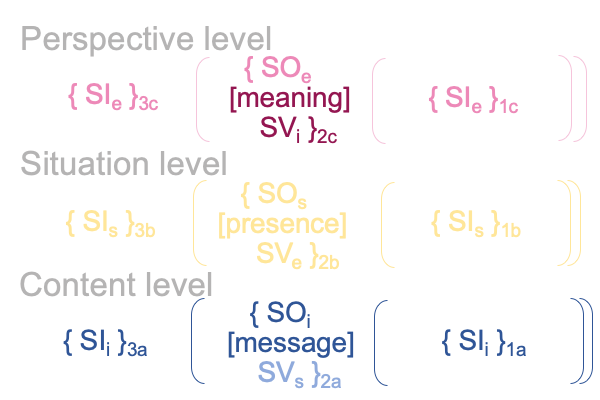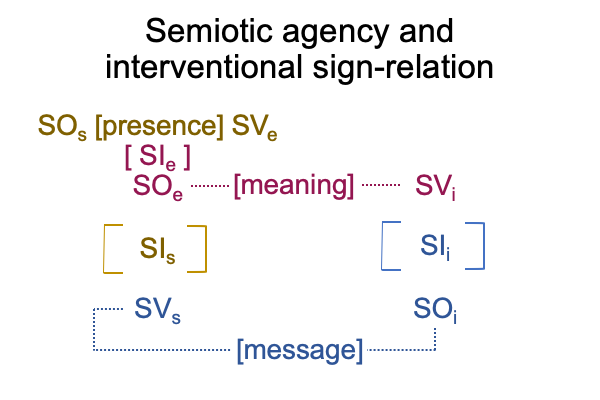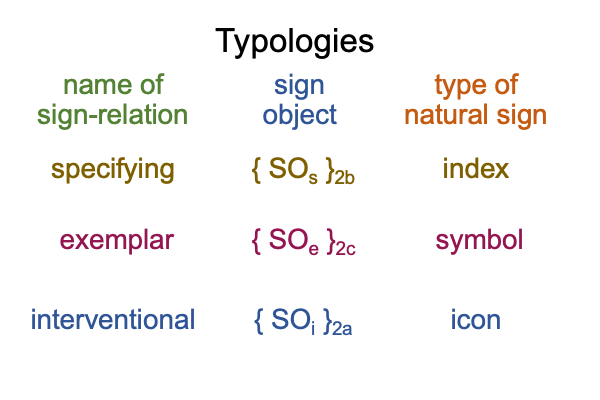0895 So, I have a working definition of [meaning], as a judgment2c (SOs) unfolding into a category-based nested form2c (SVi).
Also, from point 0862, I have a working definition of [message], as the continuity between an expression of intention (SOi) and an initiating (semiotic) event (SVs). Plus, the initiating (semiotic) event2a (SVs) is not the same as the event that occurs after judgment2c unfolds into an action2c (SVi).
0896 Here is a picture of the interventional sign, along with its contiguities.

0897 These contiguities turn out to be the connections between semiotic agency and the interventional sign-relation.
This is shown clearly in the biosemiotic (or STI) noumenal overlay.

In sum, the scholastic interscope for how humans think assists in appreciating the nature of the biosemiotic noumenal overlay.
The scholastic interscope contains three boundary-crossing sign relations. Two belong to semiotic agency. One belongs to the interventional sign-relation.
The scholastic interscope also contains three contiguities between sign-relations. These correspond to content-level [message], situation-level [presence] and perspective-level [meaning].
0898 Finally, there is Peirce’s natural sign typology, consisting of icons, indexes and symbols.
An icon is a sign-relation, whose sign-object is based on the qualities of images, pictures, unities, monads and so forth.
An index is a sign-relation, whose sign-object is based on the characteristics of pointing, contact, cause and effect, and other dyads.
A symbol is a sign-relation, whose sign-object is based on the stuff of habit, convention, law, agreement, and so on.
0899 I conclude with a list of the sign-relations that are embedded in the scholastic interscope for how humans think,along with the sign-object and type of natural sign.

0900 This information should prove handy in the upcoming examination of human agency.
